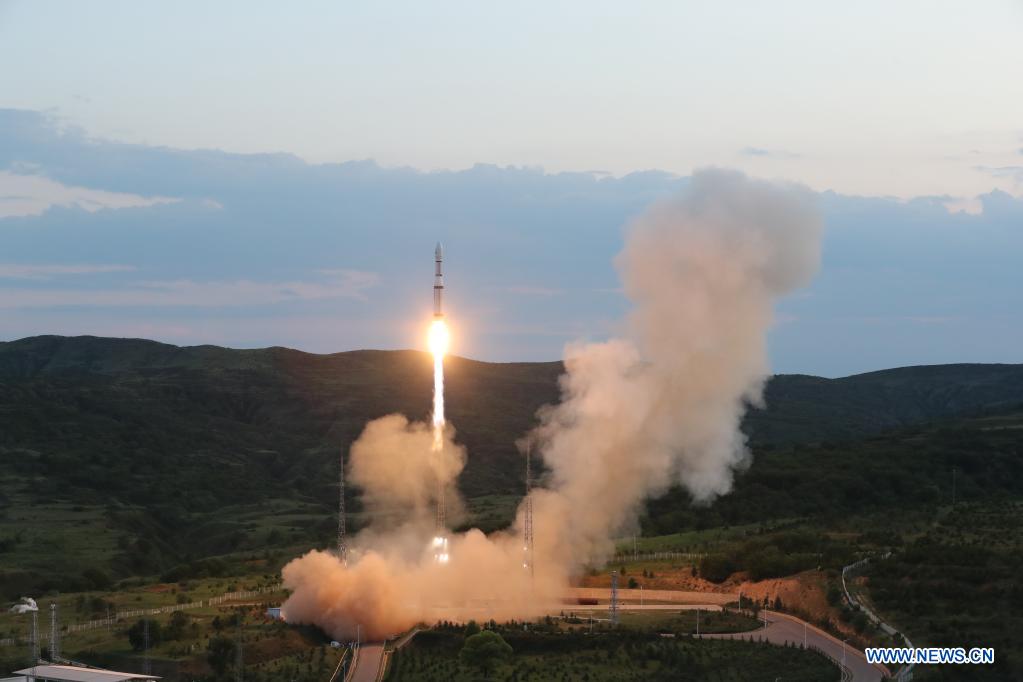
China launched five small satellites designed to detect and monitor global radio transmissions Friday on top of a Long March 6 rocket, joining five similar spacecraft deployed in orbit in 2019.
The five Ningxia, or Zhongzi, satellites rocketed into orbit on top of a 95-foot-tall (29-meter) Long March 6 booster that lifted off from the Taiyuan space center at 7:59 a.m. EDT (1159 GMT) Friday, according to the China Aerospace Science and Technology Corp., or CASC.
The launch of the three-stage Long March 6 rocket occurred at 7:59 p.m. Beijing time. The kerosene-fueled rocket headed southeast from the Taiyuan launch base in northern China to place its five payloads into orbit.
U.S. military tracking data indicated the rocket deployed its payloads in an orbit at an altitude of about 535 miles (860 kilometers), with an inclination of 45 degrees to the equator.
The five satellites belong to a fleet owned by Ningxia Jingui Information Technology Co. Ltd., a company that provides radio spectrum monitoring services to commercial and Chinese government customers.
A Long March 6 rocket launched the first five Ningxia satellites in November 2019. The second group of five satellites launched into a similar orbit.
The Ningxia, or Zhongzi, satellites were developed by DFH Satellite Co. Ltd., an entity within China’s state-owned aerospace apparatus specializing in the production of small spacecraft platforms.
The launch Friday marked the sixth flight of a Long March 6 rocket since 2015. The Long March 6 is sized to haul a payload of up to 1,100 pounds (500 kilograms) to a sun-synchronous polar orbit a few hundred miles above Earth.
The Long March 6’s first stage is powered by a kerosene-fueled YF-100 main engine, a staged combustion powerplant Chinese engineers have worked on since 2000. The engine generates approximately 120 metric tons, or 264,000 pounds, of thrust. A YF-115 engine provides propulsion for the Long March 6 second stage.
The YF-100 and YF-115 engines are the same new-generation powerplants used on China’s bigger Long March 5 and Long March 7 rockets.
According to CASC, the Long March 6 rocket used on Friday’s mission debuted nine “adaptive improvements.” The changes include a new third stage engine, the state aerospace contractor said in a statement.
Email the author.
Follow Stephen Clark on Twitter: @StephenClark1.
